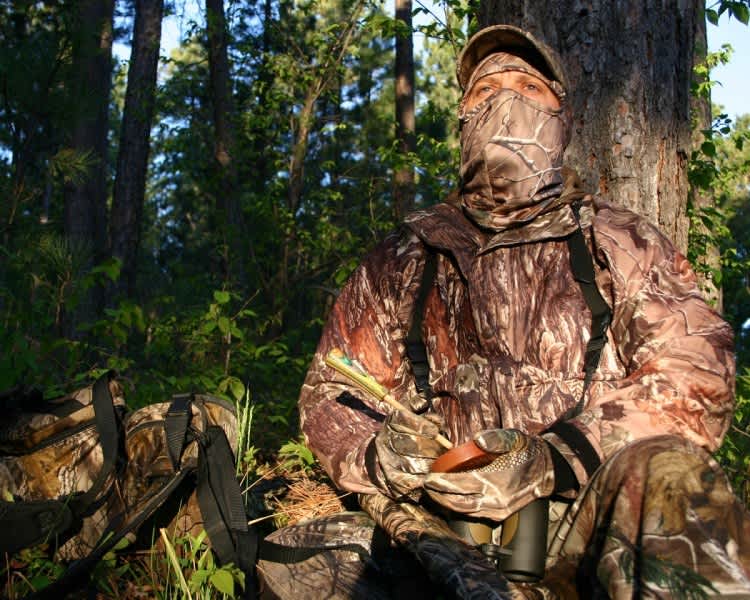Don’t Let Ticks Take a Bite Out of Your Turkey Hunting
Bill Miller 03.30.15

I don’t remember it being this way in my carefree days of youth, but ticks have become a turkey hunting fact of life. As you read this, chances are good somewhere there’s a tick crawling up the leg of some unsuspecting turkey hunter sitting in the woods. In any pursuit that involves hiking through the woods or even the grasslands, there are ticks out there waiting to suck your blood. Losing a few corpuscles won’t harm you that much, but some ticks may leave you with a longer-lasting parting gift.
The list of tickborne diseases just keeps growing. Take it from someone who spent five days in the hospital and two additional weeks of intravenous antibiotics following a tick bite incurred while turkey hunting—and they never did figure out what I had!
After that experience, I’ve become somewhat of a fanatic about avoiding tick bites. Here are some of the tips I’ve picked up in recent seasons.
While traditional DEET repellants may help deter ticks, products containing the chemical permethrin are a more secure choice and the treatment lasts longer.
 Warning! Permethrin repellants are not meant for direct application to human skin! These should be applied only to clothing with a brief drying period before putting those garments on. Keep it to the outer layers. Heavy up on your socks, pants cuffs and shirt sleeves—the places where ticks are mostly likely to begin their crawl.
Warning! Permethrin repellants are not meant for direct application to human skin! These should be applied only to clothing with a brief drying period before putting those garments on. Keep it to the outer layers. Heavy up on your socks, pants cuffs and shirt sleeves—the places where ticks are mostly likely to begin their crawl.
In addition to using both DEET and permethrin repellents, the surest system incorporates physical barriers to ticks—especially the right clothing. Turkey hunters in particular are wont to just sit down about anywhere, and that’s when ticks invade. Successful turkey hunting requires absolute stillness, so even when you see or feel ticks crawling on you, you can’t do anything about it. So the best thing to do is keep them from access to your skin in the first place.
Any fine-mesh bug suit works well, and they are made large enough to slip over any clothes you want to wear underneath. Look for a suit with a head net built right into the hood; the less openings, the less chances there are for bugs to find their way inside. Elastic cuffs are good, but when the bugs are especially bad, it’s a good idea to secure cuffs at the wrists and the ankles with duct tape. Don’t worry, there aren’t any fashion contests out in the turkey woods!
 The next generation in tick deterring clothing is ElimiTick from Gamehide. They have developed a process that bonds repellent (a man-made version of the natural repellant found in chrysanthemum flowers) to fabric fibers. The active ingredient is so tightly bonded, repellency effectiveness is retained throughout the expected life of the garment—that’s through at least 70 washings. The repellent in ElimiTick is odorless and invisible. It is the first ever US EPA-registered insect-repellent clothing. Insect Shield repellent products have been rated category IV, which is the most favorable rating. It’s been deemed appropriate for use by infants and children of all ages.
The next generation in tick deterring clothing is ElimiTick from Gamehide. They have developed a process that bonds repellent (a man-made version of the natural repellant found in chrysanthemum flowers) to fabric fibers. The active ingredient is so tightly bonded, repellency effectiveness is retained throughout the expected life of the garment—that’s through at least 70 washings. The repellent in ElimiTick is odorless and invisible. It is the first ever US EPA-registered insect-repellent clothing. Insect Shield repellent products have been rated category IV, which is the most favorable rating. It’s been deemed appropriate for use by infants and children of all ages.
Team up multiple repellents, a head net, an ElimiTick suit, and a roll of duck tape, and you’ve crafted a nearly impenetrable suit of armor against ticks. But don’t forget the vigilance. A nightly tick-check back in camp is a smart idea anyway—just to be sure. I even make these inspections during cold weather seasons if I’ve been in contact with game animals. Some ticks spend most of the winter riding around on a well-furred host. When you stop the blood flow in that game animal and grab hold for some grip and grin pictures, that’s just when that tick is looking for a new home—you!
These insights brought to you by Federal Premium Ammunition, Camp Chef, and the Quebec Outfitters Federation.


